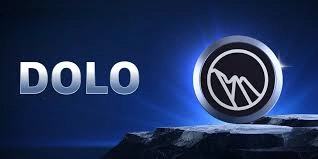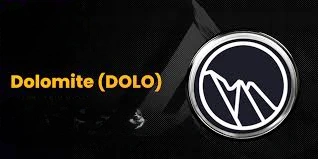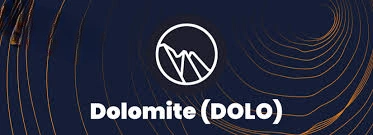Dolomite DOLO: Powering Next-Gen DeFi Trading & Lending
Table of Contents

Imagine a DeFi platform where you don’t have to juggle separate apps for spot trading, margin, borrowing, and lending. That’s exactly what Dolomite offers. With the DOLO token at its core, this protocol brings together a full suite of DeFi tools in one unified interface. According to the website, Dolomite “is the only lending and borrowing platform that can support over 1,000 unique assets” — a bold promise in today’s fragmented crypto world.
Whether you’re a trader looking to leverage your position, a lender seeking yield, or a protocol builder eyeing composable integrations — DOLO aims to deliver. In this article, we’ll unpack how the DOLO token works, the architecture behind Dolomite, its tokenomics, key benefits, actual use-cases, and how you can engage with the ecosystem. Let’s dive into the next-gen DeFi horizon!
For more insights and updates on the latest trends in cryptocurrency, be sure to check out our Nifty Finances platform, which serves as your gateway to smarter financial decisions in the digital economy.

What is Dolomite (DOLO)?
Dolomite is a next-generation decentralized exchange (DEX) and money-market protocol that unites trading, lending, and borrowing within a single, efficient platform. Built to give users full control over their digital assets, Dolomite operates without intermediaries, offering a permissionless and composable ecosystem for decentralized finance (DeFi).
Its mission is simple yet ambitious: to create an integrated DeFi environment where traders, investors, and liquidity providers can seamlessly transition between trading and lending activities — all while maintaining on-chain transparency and security.
Definition of Dolomite
At its core, Dolomite functions as a hybrid DEX and lending platform that supports multiple asset types, including major cryptocurrencies and long-tail tokens. It allows users to:
- Trade tokens directly on-chain with low fees and deep liquidity.
- Lend assets to earn interest and passive yield.
- Borrow tokens using collateralized positions.
- Engage in margin trading, leveraging borrowed assets for higher potential returns.
This combination makes Dolomite one of the few DeFi protocols to fully integrate spot trading and money-market features, bridging the gap between DEX and DeFi lending protocols. Users no longer need to move funds between platforms — they can trade, borrow, or lend from a single interface.
The protocol is non-custodial, meaning users retain full ownership of their assets at all times, while smart contracts handle matching, settlement, and risk management securely and transparently.
Introduction to DOLO Token
The DOLO token powers Dolomite’s ecosystem as both a utility and governance asset. It incentivizes network participation, aligns community interests, and facilitates decentralized decision-making.
Key functions of DOLO include:
- Governance: DOLO holders can propose and vote on protocol upgrades, risk parameters, and platform fee models.
- Incentives: Active users — such as traders, lenders, and liquidity providers — can earn DOLO rewards for contributing to ecosystem growth.
- Fee Reductions: In some cases, holding or staking DOLO may provide users with discounted trading or borrowing fees.
- Ecosystem Alignment: As Dolomite evolves, DOLO helps ensure that the community collectively guides its future direction rather than relying on centralized entities.
By combining governance rights with tangible ecosystem benefits, DOLO creates a dynamic incentive model that rewards both long-term holders and active participants.
Dolomite represents a critical evolution in decentralized finance by bridging the traditionally separate worlds of trading and lending. Many DeFi users currently face inefficiencies — moving assets between platforms, paying multiple fees, and managing fragmented portfolios. Dolomite eliminates these barriers with a unified protocol that supports both liquidity and credit markets.
This matters for three key reasons:
- Efficiency: Consolidating core DeFi functions reduces friction and enhances capital utilization.
- Accessibility: Users can manage trades, loans, and yield strategies from one intuitive interface.
- Scalability: Dolomite’s architecture supports a wide range of tokenized assets, from stablecoins and blue-chip cryptos to emerging ecosystem tokens.
Dolomite (DOLO) stands at the intersection of DEX trading, money markets, and decentralized governance. Through its integrated design and DOLO-powered ecosystem, it brings liquidity, lending, and leverage together — empowering users with greater efficiency, flexibility, and control in the expanding DeFi landscape.

How DOLO Works – Mechanics & Utility
Dolomite operates at the intersection of decentralized trading, lending, and liquidity management — and the DOLO token sits at the heart of this integrated system. As an ERC-20 token, DOLO represents both governance power and economic alignment within the Dolomite ecosystem, serving as the foundation upon which advanced functionalities like veDOLO and oDOLO can be layered in the future.
Token Functionality and Design
The DOLO token is designed with simplicity at its core. It functions as a standard ERC-20 asset on the Ethereum network, ensuring full compatibility with existing DeFi infrastructure. Unlike some complex governance tokens that embed additional modules or transfer restrictions, DOLO maintains flexibility by acting as the base token for Dolomite’s evolving architecture. This design choice allows the protocol to expand utility over time—such as introducing veDOLO (vote-escrowed) or oDOLO (option-style derivatives)—without constraining the current functionality.
As a native token, DOLO serves three primary purposes:
- Governance participation – Holders can engage in community decision-making to shape protocol development, risk parameters, and future upgrades.
- Incentive alignment – DOLO underpins liquidity rewards and yield programs, ensuring that liquidity providers and long-term users benefit from network growth.
- Protocol utility – It can be staked or locked to access enhanced governance privileges and potential fee-sharing opportunities as the protocol evolves.
Utility in the Dolomite Ecosystem
Dolomite’s integrated model combines a decentralized exchange (DEX) with a money-market protocol. Within this framework, DOLO plays a vital role in maintaining ecosystem incentives and governance integrity. Liquidity providers and traders may receive DOLO rewards for contributing to market depth or borrowing activity, fostering a self-reinforcing liquidity cycle.
The governance structure—anchored by DOLO—enables the community to guide protocol direction through voting on proposals. These proposals may involve adjusting collateral factors, enabling new assets, or optimizing the architecture for improved efficiency. By aligning user incentives with protocol health, DOLO encourages sustainable participation over speculative usage.
Furthermore, staking and locking mechanisms serve as the protocol’s long-term engagement tools. Users who lock DOLO for longer periods gain more governance weight and may access higher yield multipliers, promoting a stable and community-driven ecosystem.
Architecture and Modular Design
A defining feature of Dolomite is its modular core architecture, which integrates with plug-in modules that expand functionality beyond a traditional DEX or lending platform. This modularity enables seamless asset management, capital efficiency, and composability with other DeFi protocols.
Each plug-in can add features—such as margin trading, cross-collateralization, or advanced risk management—without disrupting the core protocol’s integrity. The DOLO token acts as the economic layer connecting these modules, ensuring consistent governance and value flow across them.
This architecture not only improves capital utilization but also allows Dolomite to remain adaptable in a fast-moving DeFi landscape. Users benefit from unified access to lending, trading, and leverage functions within one permissionless system—empowered by the DOLO token that ties the ecosystem together.
DOLO functions as both the governance backbone and the incentive engine of Dolomite, ensuring long-term protocol sustainability through modular flexibility and community ownership.

Key Features & Differentiators
Dolomite is a next-generation decentralized finance (DeFi) protocol that merges trading, lending, and asset management into one platform. Its architecture emphasizes interoperability, efficiency, and user control—offering a unified experience that eliminates the need to move funds between multiple dApps.
Broad Asset Support
Dolomite’s most distinctive feature is its ability to support over 1,000 unique assets, including many non-standard ERC-20 tokens. Traditional DeFi platforms often struggle to integrate yield-bearing tokens, LP tokens, or wrapped assets. Dolomite overcomes this limitation through its modular and extensible design.
This means users can:
- Deposit, borrow, or trade virtually any ERC-20 token.
- Use complex assets such as liquidity pool tokens or yield-bearing tokens as collateral.
- Engage with a broader range of DeFi strategies without leaving the platform.
This inclusivity benefits both users and token projects, allowing more assets to participate in lending markets and improving overall ecosystem liquidity.
Capital Efficiency
Dolomite is engineered to maximize the utility of every token deposited. By combining lending, borrowing, and trading into a single framework, the protocol enables users to reuse collateral across different functions, increasing capital efficiency and flexibility.
For example, a user can:
- Deposit assets to earn yield.
- Borrow against those same assets without unstaking them.
- Execute margin trades while maintaining collateral exposure.
This interconnected approach minimizes transaction steps, reduces gas costs, and enhances liquidity mobility across the ecosystem—all while preserving the transparency and decentralization inherent to DeFi.
Unified DeFi Experience
A major differentiator for Dolomite is its streamlined, all-in-one user experience. Instead of juggling multiple dApps for trading, lending, and liquidity management, users can perform all these actions within a single interface.
The unified experience includes:
- Spot and margin trading within the same dashboard.
- Integrated lending and borrowing markets with real-time portfolio tracking.
- Cross-margining and advanced risk management tools that make professional-grade trading strategies accessible.
This simplicity is complemented by Dolomite’s modular infrastructure, which allows the protocol to evolve and integrate new features without disrupting existing operations.
By addressing the fragmentation problem in DeFi, Dolomite positions itself as a comprehensive financial layer for the decentralized economy. Its combination of broad asset support, capital efficiency, and cohesive design allows users to manage liquidity and risk from one place, marking a significant step toward a more seamless and productive DeFi experience.
Real-World Use Cases & Ecosystem Impact
Dolomite has positioned itself as a versatile platform bridging trading, lending, and asset management—offering practical tools for traders, liquidity providers, and institutional DeFi participants. By combining multiple financial functions in one place, it enhances capital efficiency and expands the scope of decentralized finance on Ethereum and compatible networks.
Traders: Flexible Margin and Asset Utilization
For traders, Dolomite provides a robust margin trading environment with broad collateral flexibility. Unlike traditional DEXs limited to a few token pairs, Dolomite supports over a thousand unique assets, allowing users to access diverse trading opportunities.
Key advantages include:
- Collateral diversity: Use stablecoins, yield-bearing tokens, or LP tokens to back leveraged positions.
- Cross-margining: Manage multiple trades under a single margin account for improved efficiency.
- Integrated risk tools: Real-time portfolio monitoring and automatic liquidation safeguards.
This design gives active traders institutional-level flexibility within a decentralized, permissionless framework—helping them manage exposure and liquidity more effectively.
Liquidity Providers and Lenders: Productive Capital Deployment
Dolomite extends beyond traditional lending markets by letting users retain governance and staking rights even when supplying assets as liquidity. Lenders can earn yield through lending pools while maintaining exposure to their original DeFi positions.
Within the Dolomite ecosystem, participants can:
- Supply assets to earn yield and trading fees.
- Borrow against deposited collateral without unstaking it.
- Retain access to staking rewards or governance utilities tied to the deposited token.
This creates a more dynamic and efficient liquidity cycle, where capital remains productive across multiple layers of DeFi activity.
Protocol Integrations: Enabling Advanced Strategies
Dolomite’s modular architecture makes it a natural partner for other DeFi protocols, DAOs, and professional asset managers. The system is designed to be extendable, allowing external developers and funds to integrate Dolomite’s lending or margin features into their own strategies.
Real-world integrations include:
- DeFi aggregators are tapping into Dolomite’s deep liquidity for optimized yield and trading routes.
- DAOs using Dolomite for treasury management, earning yield while retaining token utility.
- Hedge funds and DeFi managers are building automated strategies leveraging Dolomite’s composable modules.
This open, interoperable design reinforces Dolomite’s position as a core liquidity and trading layer within the decentralized finance stack.
Ecosystem Impact
Dolomite’s unified model—where users can lend, borrow, and trade from a single platform—represents a step forward for on-chain financial infrastructure. It reduces friction between DeFi applications, increases liquidity mobility, and allows capital to circulate more freely across protocols.
As more projects integrate Dolomite’s modules and as liquidity deepens, the protocol is expected to become an essential backbone for capital-efficient, composable DeFi ecosystems. By serving traders, liquidity providers, and institutions alike, Dolomite contributes to a more fluid, interconnected decentralized economy.
How to Get Involved & Practical Steps
Getting started with Dolomite is straightforward for both users and builders, thanks to its modular structure and clear on-chain governance model. Whether you’re a trader, liquidity provider, or developer, the ecosystem provides multiple ways to participate and contribute to its long-term growth.
Acquiring the DOLO Token
The first step in joining the Dolomite ecosystem is acquiring the DOLO token, which serves as the foundation for governance, incentives, and community participation. It’s an ERC-20 token deployed on Ethereum and compatible Layer-2 networks.
Users can:
- Buy DOLO on supported exchanges or decentralized platforms, ensuring they verify the token’s contract address and network compatibility before transacting.
- Participate in token pools or liquidity programs that distribute DOLO to contributors or liquidity providers.
- Track token performance through analytics dashboards or community updates to stay informed on emissions and governance proposals.
Holding DOLO is the key to unlocking deeper engagement—especially in governance and staking opportunities.
Engaging With the Protocol
Dolomite allows participants to use their assets in multiple ways within a unified, capital-efficient environment. The platform integrates lending, borrowing, and trading into a single interface, enabling users to maximize their capital without leaving the ecosystem.
Here’s how users can engage:
- Supply assets to earn yield while retaining exposure or governance rights.
- Borrow against collateral to access liquidity without selling existing holdings.
- Trade on margin, leveraging diverse collateral types for flexible strategies.
- Stake or lock DOLO to participate in governance and earn potential rewards tied to the protocol’s growth.
By combining these functions, Dolomite allows users to optimize capital efficiency and remain active across multiple DeFi activities with minimal friction.
For Builders and Developers
Dolomite’s modular architecture is open to integration by builders and partner protocols. Developers can extend its ecosystem by creating plug-in modules or integrating Dolomite’s lending and trading features into other DeFi applications.
Potential contributions include:
- Integrating Dolomite modules to enable cross-protocol liquidity or margin trading.
- Building custom financial tools that leverage Dolomite’s APIs and smart contracts.
- Collaborating on new governance proposals to expand supported assets or introduce new yield strategies.
This open-source ethos fosters innovation while ensuring interoperability across the growing DeFi landscape.
Tips for Investors and Participants
For those interested in supporting or investing in the Dolomite ecosystem, a cautious and informed approach is essential. Before committing capital or tokens, consider the following:
- Review the protocol’s emission schedule and governance documentation.
- Track module adoption and network usage to gauge long-term viability.
- Observe community activity through official channels and proposals to understand governance health.
- Prioritize long-term participation over short-term speculation to align with the ecosystem’s sustainable growth model.
Dolomite’s combination of liquidity depth, composability, and transparent governance makes it a promising addition to the DeFi ecosystem—but, like all decentralized protocols, success depends on active and responsible community engagement.
Dolomite and its DOLO token represent a compelling evolution in DeFi — one that brings together trading, lending, borrowing, and broad asset support under one hood. With a thoughtful tokenomics model, capital-efficient architecture, and a unified user experience, Dolomite stands out from many fragmented platforms. Whether you’re a trader, liquidity provider, protocol builder, or investor, DOLO offers a chance to participate in a platform built for the future of DeFi.
Explore the features, understand the token dynamics, engage with the protocol—and decide what role you’ll play. The next chapter of DeFi is being written, and Dolomite is drafting a strong page. Liqwid Finance is a non-custodial liquidity market protocol built on the Cardano blockchain, designed to empower users with decentralized lending and borrowing services. Join for more details.
[…] Cardano’s secure and efficient infrastructure, Liqwid aims to deliver quick, affordable, and inclusive lending facilities accessible to anyone in the […]